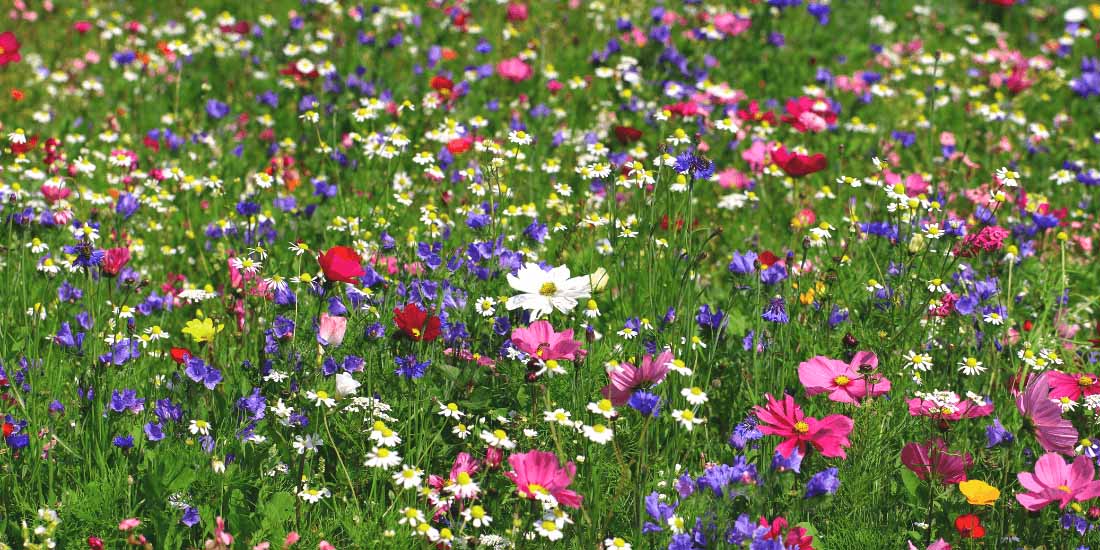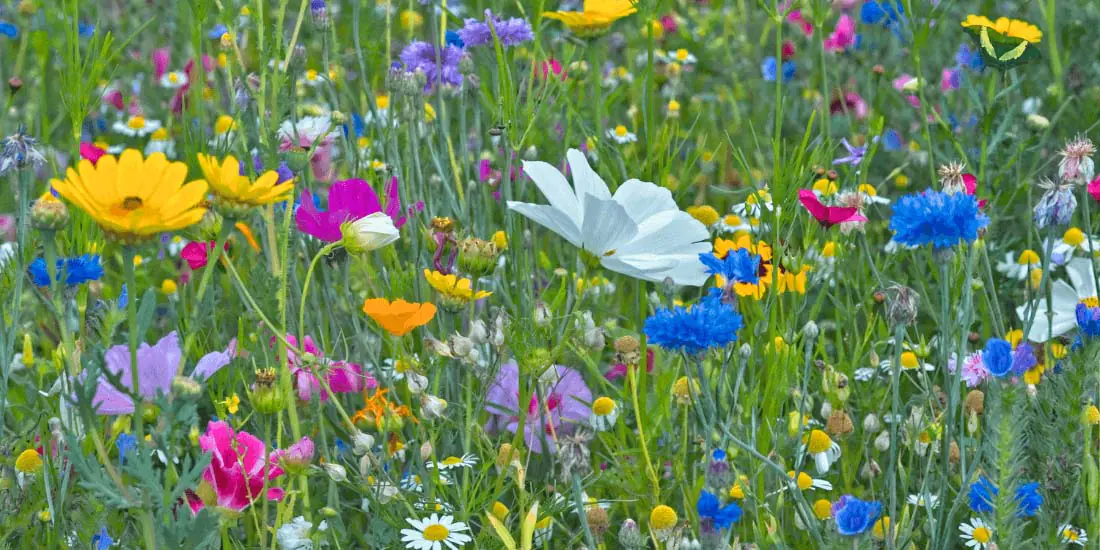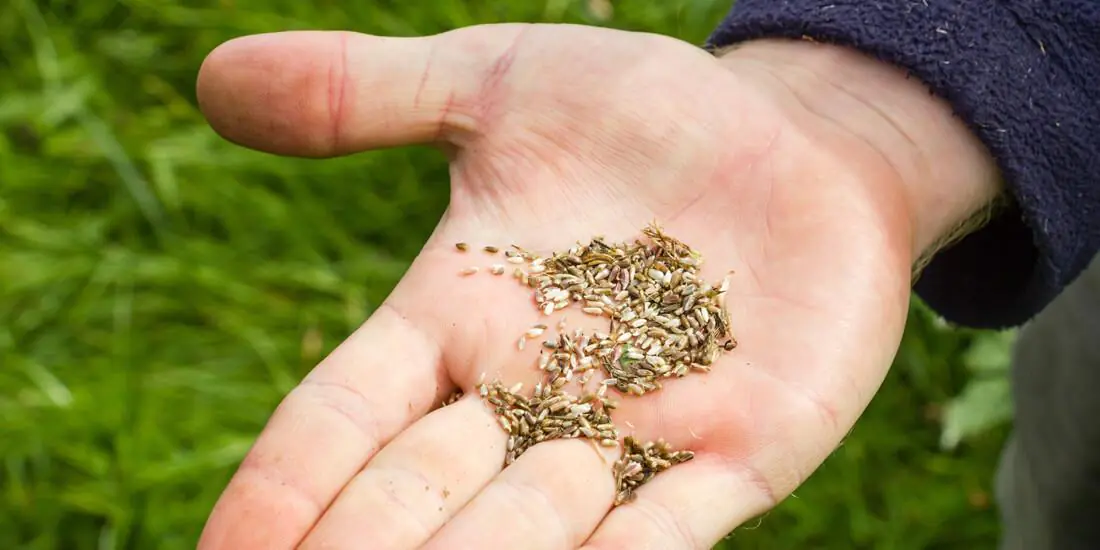We accept:
How to create a wildflower meadow

Wildflowers add a range of colours, exciting shapes and pleasant smells that sweep across your garden, catching the eye of onlookers. It is also where local wildlife will flourish, appealing to bees, birds, bugs, butterflies, and wild birds, and it can be a wildlife haven for you and the whole family to enjoy.
How can I create a wildflower meadow?
How to create a wildflower meadow is likely now a thought sitting at the front of your mind. And you will be pleased to hear that establishing a wildflower meadow isn’t complicated.Creating a wildflower meadow involves only a few steps:- Start by preparing the soil to get it ready for sowing wildflower seeds
- An important part is to choose the right wildflower seeds
- Then you can begin sowing your wildflowers into your garden

Prep work to create a wildflower meadow
It’s a common misconception that since wildflowers have “wild” in the name, they will grow wild if you scatter seed over your soil. And while it is very likely that some will germinate and flowers will grow, you need to prepare the area properly to get the best results. You will achieve the wildflower meadow you have imagined by setting aside time to properly prepare the area.When planning to sow wildflowers, you will probably already have an area in mind where your wildflower meadow to be. But first, you should ensure that the area is free from grass, weeds or other flora. By doing this, you will be helping your wildflowers get the chance to thrive as best as they can!- Remove grass, weeds or other flora before sowing wildflower seeds
- This is because the more fertile grasses, weeds, and flora will take over
- Weeds can be dug out using a garden shovel, or you can use a turf cutter for larger areas
- Once you have removed them all, we recommend you remove the top 5-10cm of soil to reduce soil fertility if required – and this would only be required if the soil in your garden is primarily good-quality top-soil
- Next, you should level the soil and then leave it for 2-4 weeks to cultivate
- This six-week period allows any sneaky weeds to pop up, so you can remove them before sowing the wildflower seed
Preparing the soil using yellow rattle:
Rather than removing grass, you could introduce yellow rattle if you aren’t able to or don’t have the free time to carry out the work outlined above. Yellow rattle will help weaken existing grasses, but be aware that this might take a bit longer than the complete removal process. To use this method, cut your grass as short as possible at the end of summer.Then scarify (rake) the area – you are aiming for 50% bare soil. After this, sow your Yellow Rattle before winter sets in, so it will germinate and bloom in early spring and begin to weaken the existing grasses. You can then consider introducing new wildflower seeds by scarifying the area and sowing your wildflower meadow seeds.Picking the right seed
With the prep work done, it’s time to consider what wildflower seeds you want to see in your garden. This could be a flower bed, a border, a larger area, or even a location in your garden where nothing ever seems to grow.It is also worth mentioning that you can sow any wildflower mix if you have a normal soil type (not clay or sandy soil), and the area where you plan to sow your wildflower seed is relatively free from the shade.Specials seeds to create a wildflower meadow in clay-based or sandy soils
If you have problematic soils or the area is heavily shaded, a more specialised mix containing wildflowers suited to these conditions would be better. But, if you are still unsure what mix to go for, you can read our choosing wildflower guide or get in touch, and we will help you find the mix you need. We also have a guide that details the benefits of annuals vs perennial wildflowers and the best times to sow them.We have a range of UK native wildflower seeds to suit your every need:- Our range includes 100% annuals and perennial seeds
- We have mixes made for specifically attracting bees & pollinators
- Our bespoke blends are ideal for shaded areas, for clay soils, and wildflowers for sandy soils
- And we have a range of meadow wildflower seed mixes that provide blooming flowers at various times throughout the year

Sowing your wildflower seed
Now that your area has been prepped and you’ve picked your wildflower mix, the next step is to sow the seed. Typically the best time to sow wildflower seed is during autumn. This will give you the earliest display of wildflowers the following spring! But this is not the only time you can plant them; wildflower seeds can be sown throughout the year. Annual wildflowers will usually bloom around 60-80 days after sowing, and perennials will start to shoot up in the spring after their first winter.Wildflower seeds need to undergo ‘stratification’, which is when the seed freezes to help kickstart its germination, and this is why people often sow in autumn, so the seeds go through that during winter. So, to ensure our seeds are ready to sow when you receive them, our seed mixes are kept in cold warehouse conditions throughout the winter, which does the same job meaning you can plant our seeds in spring/early summer!Sowing the seed process:
- Scatter your wildflower seed at the recommended rate of 5g per m2
- This allows ample room for the seeds to grow and bloom individually
- When scattered, lightly rake the area to cover the seed with soil and then water well
- If dry spells occur after you have sown the seed, remember to water the area so it doesn’t dry out
- But, knowing the UK weather, this is only likely to be an issue in summer.